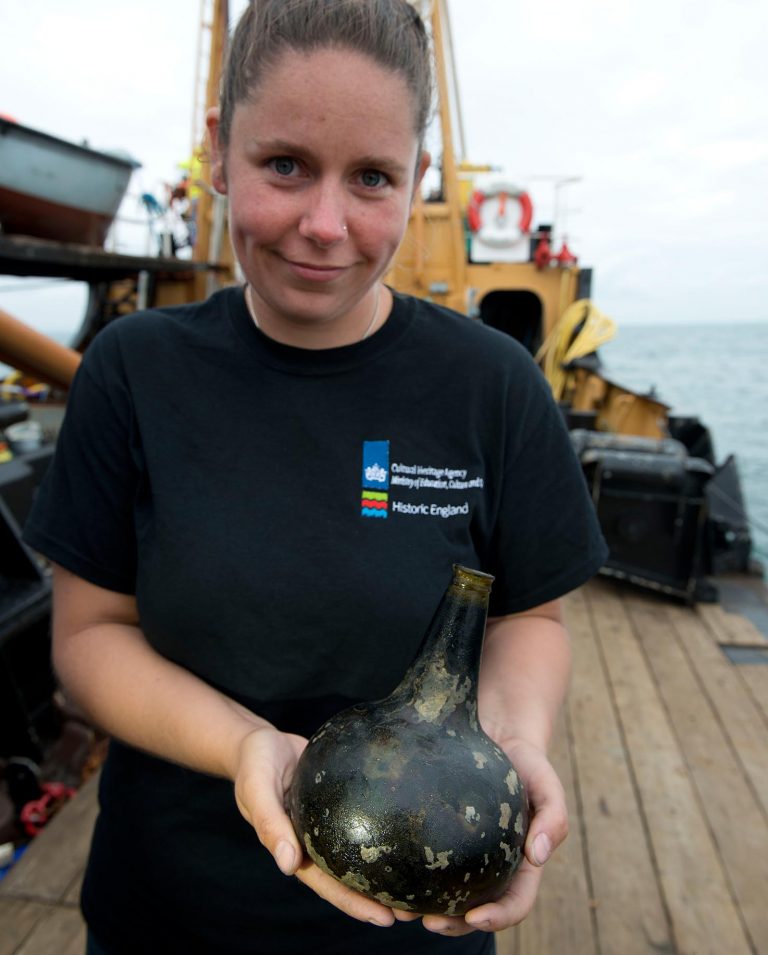An international team of maritime archaeologists has been diving and recording the historic wreck this summer, and excavating storage rooms and living quarters in the stern.
Also read: Weapons & coins: video expands Rooswijk story
Items such as wooden seaman’s chests, pewter jugs and spoons, glass bottles, ornately carved knife-handles and shoes have been recovered and brought ashore at Ramsgate for “first-aid” conservation.
The Rooswijk was on only her second voyage, heading for Jakarta (then Batavia) with a cargo of silver ingots and coins, stone blocks and iron bars, when she sank with no survivors.
Originally discovered by a sports diver, the protected wreck-site was partially excavated in 2005. It is managed by Historic England (HE) but all remains are owned by the Dutch government.
The #Rooswijk1740 project is led and financed by the Cultural Heritage Agency of the Netherlands. “The Goodwin Sands has been a treacherous place for ships throughout the centuries and is now a treasure trove for archaeologists,” said Project Leader Martijn Manders. “It is also popular with sports divers.
“The rapidly shifting sands mean that the site is even more exposed now than it was during our initial dives to assess the condition of the Rooswijk last year. This makes the excavation urgent.” The site is classed as “high risk” on the Heritage at Risk register.
“We are excited about this project because the Rooswijk is a showcase of modern underwater archaeology in which co-operation is essential,” said Manders.
“It provides unique opportunities for young professionals and the public to participate and is a project through which we can learn about our shared past and who we are.”
Only a third of the 250 VOC shipwrecks around the world have been located, and the Rooswijk is said to be the first to be scientifically researched or excavated on such a scale.
From Ramsgate, finds will be taken to an HE storage facility to be assessed, analysed and conserved, and later returned to the Netherlands, though some may later be made available for display in Ramsgate.
During the open days visitors are promised the chance not only to see the finds but to explore techniques and technology used by the archaeologists. Further information is available here.

